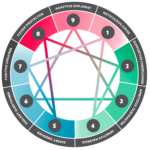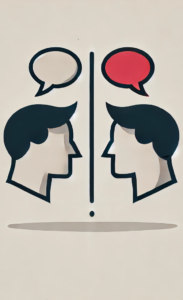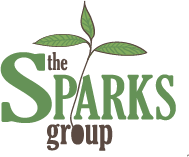The Enneagram: A path to better results
This month, I’ve invited Anna Sparks, our Chief Operating Officer (and no relation!), to share some of her wisdom on the Enneagram. We use the Enneagram in combination with stage of adult development to help our clients get powerful results including enhanced self-awareness, an expanded view of complex situations, and more choice in how they respond.
Jessica
You are not your personality
Our personalities are the armor or shell we put on that people can see on the outside. For some of us, we’ve been carrying around the same shell for so long, we haven’t ever had the chance to consider whether we want it, need it, or if it is helping us. Inside, we are our true selves, some people call it essence but I’m going to go ahead and call it the “real me” to contrast it with the “me I want to present to the world to protect myself/because that’s what I think others need me to be.”
Enter the Enneagram

Unique from other personality assessments, the Enneagram focuses on the why behind our actions. It also encourages us to develop all nine lenses so we can look at the world and understand the people around us in various ways and call upon the lens that will work best in any given situation.
Self-awareness is the easiest path to better results
When I work with leaders and share the Enneagram concept with them we almost always tackle questions like, “Is this how I want to be? Is this working for me and the people around me?” That’s self-awareness – one of the most powerful elements of coaching. When we are self-aware, we can then choose whether we want to be the way we are being. When we are not self-aware, we keep doing the same things over and over and get the same results and reactions. You can see why this would be problematic for leaders who are trying to achieve results. Without self-awareness, they don’t have any tools in their toolbelts. With self-awareness, they have a wide array of options and ways they can change the way they are showing up to get different results.
Small changes make big impacts
About a year ago, Jessica and I experienced a major miscommunication.
Some of you may know that last summer I moved from Bogota, Colombia back to Arlington, Virginia. My family spent three years in Colombia and the move back was a big stressor and I had to ask for a lot more flexibility at work than ever before. On top of that, I was not going to be in a fixed location for about two months of the summer. This meant no regular office space or set-up and I had to figure out how to adjust my work accordingly. In passing, I said something to Jessica like, “I don’t think I’m going to sign up for the portable internet connection this summer because it is going to be really expensive and I’m not sure it’s worth it. ” I was talking about 10 days in Yellowstone and Grand Teton National Parks where internet is notoriously spotty. Jessica thought I was talking about the whole two-month transition.

In talking it out, I realized that sometimes the way I say things makes Jessica interpret them as a fact or final decision on my part with no space for input from others. Without inviting questions, I not only shut down input from others but I don’t make space for others to ask questions to clarify their understanding.
This is the way I talk and the way I have talked for as long as I can remember. I think it’s helpful. Others don’t have to spend time or effort. It keeps me in control. It’s not a fake request for input. I never look like I am waffling, causing uncertainty for others.
Oh dang.
That’s it, right there – the self-awareness. Why do I talk like this when others might add something like, “What do you think about that plan?”
What are the results when I talk like that? Is it working for me and for the others around me?
Is it working for me and for the others around me? Not in this case. And, if I think about it, I bet a lot of people feel steamrolled by that approach. I can see ways that I haven’t invited dissent when it would have been helpful. I can see ways that I’ve put words into others’ mouths. I can see the way I am exerting control over the situation.
The good news about the Enneagram is that it helps us understand how we are motivated. For me as an Enneagram Eight, I’m motivated by a need for control and an avoidance of vulnerability. My behavior was covertly (or perhaps unconsciously) using language that did not invite others into the conversation. The good news is that if I can recognize that I am motivated by a need for control, I can change my behavior. And, guess what I really like about that? Being able to change my behavior means I am in control!
In this case, changing the behavior was incredibly easy. My intent was not to shut down dissent or not be in conversation but for so long I have been talking and interacting in the same ways and I never thought to question it. Once I did, I realized I could basically say the same thing and add, “So what are your thoughts on that?” and it completely neutralized the conversation. When I do have a recommendation, I now phrase it like this: “We have a choice between A and B. A is better because….B is better because…What do you think? If it was only up to me, I’d probably go with A but I can see how B would be a good option as well.”
I’m in choice, not on auto-pilot
I haven’t lost the ability to communicate in my “old ways” but with the new self-awareness, I’ve realized I have more choices in how I communicate than I used to. I can still provide my point of view if that’s important to me AND also invite others into the conversation.
Before this self-awareness, I wasn’t in choice. I was on auto-pilot.
So back to the Enneagram
While we all have a primary Enneagram type – for me, it’s the Eight – we have also developed the lenses of the other eight types to varying degrees. The Enneagram not only shows us to what extent we have developed each of these lenses but points us in the right direction to further understand how our primary lens is affecting us helpfully or unhelpfully and which lens might be more helpful when we are struggling.
If you already know your Enneagram type and it’s helped you, we’d love to hear about it!
If you or your team is interested in learning more about the Enneagram or more about the Enneagram and how our personalities change with each stage of adult development (you know how we love vertical development at The Sparks Group!), schedule a conversation here.
Grab our new downloadable guide to the nine Enneagram types here.
Anna Sparks
Chief Operating Officer
The Sparks Group


